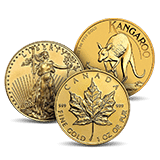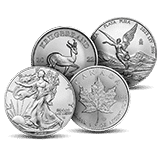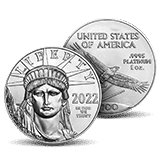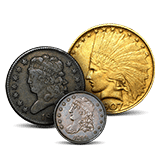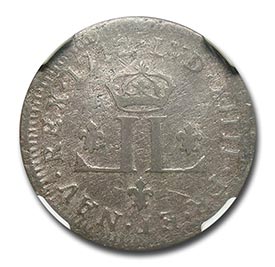
The Purpose of Counterstamped Coins
Counterstamped coins are not common in modern circulation, but in previous eras, they were often used. Counterstamps or countermarks were a way to certify a coin had the proper Precious Metal content and was acceptable for legal tender in a region or with a certain merchant. These pieces are a unique part of numismatic history.
Counterstamped Coin Design
A counter-stamped coin is not a particular type of coin, but rather something that was done to it. There are several different names for the practice depending on how it was done, including countermark, counter-stamp, punch mark and chop mark. Coins were created with a specific design stamped onto them by the die when they were created, but at some point after their creation, counter-stamped coins were stamped by another authority.
Most of these coins are early U.S. Large Cents, but there are a wide variety of other coins as well, including most of the Capped and Draped Bust Silver quarters, half dollars and dollars. Trade dollars were often chop marked, as they were designed for use in the Far East for trade and the practice of stamping a “chop” or small mark in the coin to certify its authenticity was common.
Early U.S. coins and foreign currency were often marked with a counter-stamp, and there are many counter-stamps that are well known for their use throughout the colonies and the fledgling United States of America. Some like “J.M. Taylor” are prolific and easily recognized by collectors.
Counterstamps were used for many different purposes. Some repurposed coins into tokens or tickets of admission. Others turned them into tokens accepted at a particular store or broker. Some were used as advertisements for the business. Some U.S. coins were shipped to places like Puerto Rico and counter-stamped to make them legal tender in that country. The purposes were varied.
Counterstamping fell out of favor over the years, and it’s unusual for it to be practiced in modern times. It falls in a zone of questionable legality. Alteration of currency is not necessarily illegal — machines to flatten and stamp pennies are commonly used to create souvenirs. But the government does not tend to appreciate counter-stamping, and many of the reasons for its use are obsolete now.
Historical Significance
Counterstamps are unique and often tied to small local events and shopkeepers, making them a fascinating glimpse into trade and commerce at the time of the counter-stamp. While coins tell the story of the country or minting authority that created them, counter stamps tell the stories of the businesses and regular people of their age.
Numismatic Value
Counterstamped coins are a unique collectible and the market can vary. It is a niche market among collectors. Some coins are collected in spite of counter stamps because there are not that many in existence, but others are collected because of them. Prices are very individual.
Expand your collection today and shop our assortment of rare U.S. coins.

PCGS Products
You need the most up-to-date pricing on your coin collection. That’s why APMEX has partnered with PCGS, the premier grading authority in the world of rare coins, to bring you constantly updated pricing on collectibles and rarities. PCGS has been grading coins since 1986, bringing consistent standards of quality to a fractured industry. In the years since they have remained a source of reliable information on the current collectible and rare coin market.

